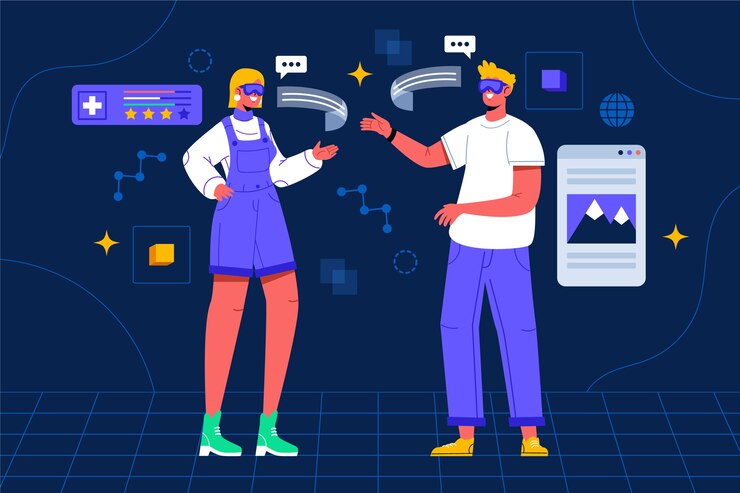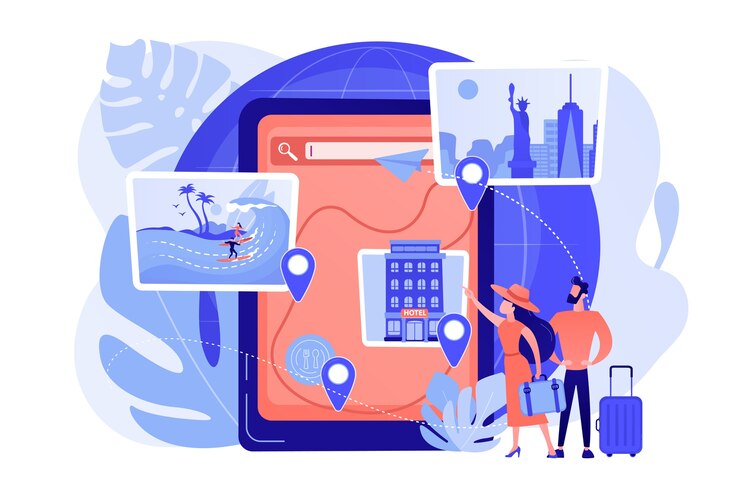What Are Digital Twins?
Digital Twins Connecting Reality are virtual models of physical objects, systems, or processes that mirror their real-world counterparts. These digital replicas are created using data from sensors, IoT devices, and other sources, allowing them to accurately but represent the current state, behavior, and performance of the physical entity. The concept of Digital Twins was first introduced by Dr. Michael Grieves in 2002, and it has since evolved with advancements in data analytics, artificial intelligence, and cloud computing.
The Core Components of Digital Twins
- Physical Entity: The real-world object, system, or process that the Digital Twin represents.
- Digital Model: The virtual replica created using data from the physical entity.
- Data Connectivity: The continuous flow of data between the physical entity and its digital model.
- Analytics and Insights: The use of data analytics, AI, and machine learning to gain insights, predict outcomes, and optimize performance.
- Visualization: The ability to visualize the digital model in real-time, often through 3D simulations and interactive interfaces.
Applications of Digital Twins
1. Manufacturing
In the manufacturing sector, Digital Twins are transforming production processes by enabling real-time monitoring, predictive maintenance, and process optimization. Manufacturers can create digital replicas of their machinery and production lines to simulate different scenarios, identify potential issues, and optimize operations. This not only reduces downtime and maintenance costs but also enhances product quality and production efficiency.
2. Healthcare
Digital Twins are making significant strides in healthcare by providing personalized and precise medical solutions. By creating digital replicas of patients, healthcare providers can simulate treatment plans, predict disease progression, and tailor therapies to individual needs. For instance, Digital Twins of organs can be used to practice complex surgeries, reducing risks and improving patient outcomes. Additionally, Digital Twins can monitor patients’ health in real-time, enabling proactive interventions and continuous care.
3. Urban Planning and Smart Cities
In urban planning and the development of smart cities, Digital Twins play a crucial role in optimizing infrastructure, enhancing sustainability, and improving the quality of life for residents. City planners can create digital replicas of urban environments to simulate traffic patterns, energy consumption, and environmental impact. This allows for better decision-making and the implementation of smart solutions for transportation, waste management, and energy efficiency. Digital Twins also facilitate real-time monitoring of city infrastructure, enabling prompt responses to issues such as water leaks, power outages, and traffic congestion.
4. Energy and Utilities
Digital Twins are revolutionizing the energy and utilities sector by enhancing asset management but improving operational efficiency, and supporting the transition to renewable energy sources. Utility companies can create digital replicas of their assets, such as power plants, grids, and pipelines, to monitor performance, predict failures, and optimize maintenance schedules. Digital Twins also enable the simulation of renewable energy integration, grid balancing, and demand response strategies, contributing to a more resilient and sustainable energy system.
5. Aerospace and Defense
In the aerospace and defense industries, Digital Twins are used to design, test and maintain complex systems such as aircraft, spacecraft, and defense equipment. Engineers can create digital replicas of these systems to simulate different operating conditions, identify potential failures, and optimize performance. Digital Twins Connecting Reality also facilitate predictive maintenance, reducing downtime and ensuring the safety and reliability of critical assets.
Benefits of Digital Twins
The adoption of Digital Twins offers numerous benefits across various industries, including:
- Enhanced Operational Efficiency: By providing real-time insights and predictive analytics. Digital Twins enable organizations to optimize processes, reduce downtime, and improve resource utilization.
- Cost Savings: Digital Twins help identify potential issues before they occur, reducing maintenance costs, minimizing downtime, and extending the lifespan of assets.
- Improved Decision-Making: The ability to simulate different scenarios and analyze data allows organizations to make informed decisions and implement effective strategies.
- Personalization and Customization: In healthcare and other industries, Digital Twins enable personalized solutions tailored to individual needs, improving outcomes and customer satisfaction.
- Innovation and R&D: Digital Twins facilitate the testing and validation of new ideas, products. technologies in a virtual environment, accelerating innovation and reducing development costs.
- Sustainability: By optimizing resource utilization and reducing waste, Digital Twins Connecting Reality contribute to sustainability efforts and environmental conservation.
Challenges and Considerations
While Digital Twins offer numerous benefits, their implementation comes with challenges and considerations that organizations must address:
- Data Security and Privacy: The continuous flow of data between the physical entity and its digital model raises concerns about data security and privacy. Organizations must implement robust cybersecurity measures to protect sensitive information.
- Data Integration: Integrating data from various sources and ensuring its accuracy and consistency can be complex. Organizations need to invest in data management and integration solutions to overcome this challenge.
- Scalability: Scaling Digital Twin solutions to cover large and complex systems requires significant computational resources and infrastructure. Cloud-based solutions and edge computing can help address scalability challenges.
- Interoperability: Ensuring interoperability between different systems and technologies is crucial for the successful implementation of Connecting Reality Digital Twins. Organizations should adopt open standards and collaborate with technology partners to achieve seamless integration.
- Cost and ROI: The initial investment in Digital Twin technology can be high, and organizations must carefully evaluate the cost and expected return on investment (ROI). A phased approach and pilot projects can help demonstrate value and build a business case for broader adoption.
The Future of Digital Twins
The future of Digital Twins is promising, with advancements in AI, IoT, and data analytics driving their evolution. As technology continues to evolve, Digital Twins will become more sophisticated, accurate, and accessible. Key trends shaping the future of Digital Twins include:
- AI-Driven Insights: The integration of AI and machine learning will enhance the analytical capabilities of Digital Twins. enabling more accurate predictions, real-time insights, and autonomous decision-making.
- Edge Computing: Edge computing will enable real-time data processing and analysis at the source. reducing latency and enhancing the performance of Digital Twins in critical applications.
- Integration with Blockchain: Blockchain technology can enhance data security, transparency, and traceability in Digital Twin applications, particularly in supply chain management and asset tracking.
- Industry-Specific Solutions: Digital Twins will become more tailored to specific industries. Connecting Reality offering customized solutions that address unique challenges and requirements.
- Human-Machine Collaboration: Digital Twins will facilitate closer collaboration between humans and machines, enabling augmented decision-making and enhancing productivity.





